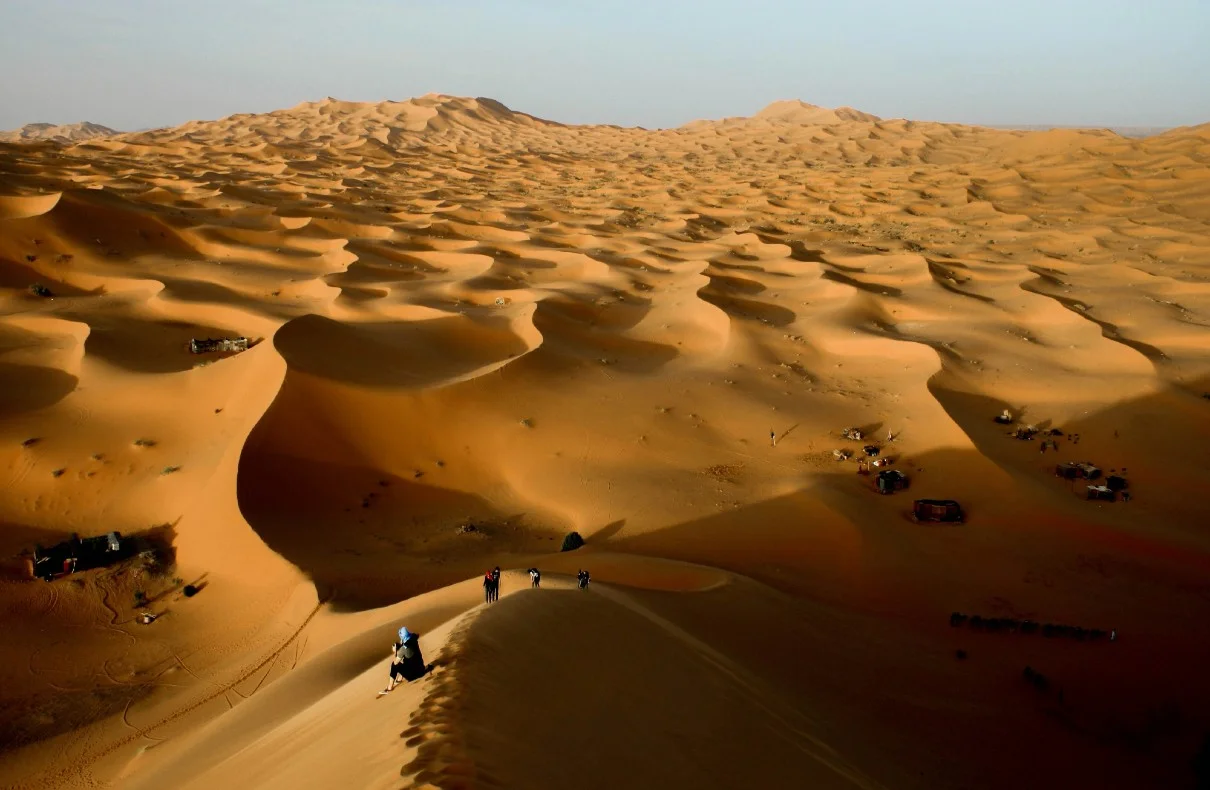
There’s a certain captivating allure that desert landscapes hold, with their vast expanses of sand dunes stretching as far as the eye can see. Among these sand dunes, the star dunes stand out. These unique formations, shaped like stars when viewed from above, have mystified scientists for many years due to their unusual absence from the Earth’s geological record. However, a recent scientific discovery has unraveled the mystery of these hidden “stars” of the desert, tracing their origins back thousands of years.
Star dunes are enormous sand dunes distinguished by their radial arms that radiate from a central peak, giving them the appearance of a star when seen from above. These sand pyramids are prevalent in modern deserts, including the sand seas of Africa, Arabia, China, and North America. Interestingly, star dunes are not confined only to our planet. These fascinating dune formations have also been discovered on other celestial bodies, including Mars and Saturn’s moon Titan.
Despite their modern-day ubiquity, star dunes have remained nearly absent from the geological record. This puzzling absence has intrigued scientists, considering that past deserts are a common part of Earth’s history, preserved in rocks deep underground. The lack of star dunes in the geological record has led to a long-standing enigma in the field of Earth Sciences.
A team of academics from Aberystwyth University, Birkbeck, and UCL has made a ground-breaking discovery that solves the mystery of the missing star dunes. Through their research, they have successfully dated a star dune back to thousands of years. This is the first study that has determined how long it takes for a star dune to form and examined its internal structure.
Why Modi’s photos called for an Indian boycott of Maldives tourism?
The research focused on the Lala Lallia star dune located in the southeast of Morocco in the Erg Chebbi area of the Sahara Desert. The name Lala Lallia translates to “highest sacred point” in the Berber language. This star dune, lying close to the Algerian border, has featured in popular TV series and blockbuster films such as SAS Rogue Heroes, The Mummy, and Sahara.
The research team used cutting-edge luminescence dating techniques to determine the age of the star dune. These techniques allow scientists to find out when the minerals in the sand were last exposed to sunlight. Astonishingly, the study discovered that the oldest parts of the base of the Moroccan dune are approximately 13,000 years old.
However, the revelation that the dune formed rapidly in the last thousand years came as a surprise to the scientific community. Previously, it was believed that larger dunes like the star dunes were much older. The research also showed that the star dune had reached its current dimensions of 100-meter height and 700-meter width due to rapid growth in the past millennium, as it slowly moved westward.
The researchers suggest that the formation of the star dune coincided with an event known as the Younger Dryas. This event is marked by a sudden cooling period in Earth’s history. The study also reveals that the growth of the dune halted for a period of 8,000 years. Pottery found at the site indicates a period of wetter conditions, possibly due to an enlarged monsoon, which stabilized the dune before a significant drought.
Joe Manchin: A Centrist Democrat’s Decision Not to Run for President in 2024
This breakthrough research has not only solved the mystery of the missing star dunes but also provides a new model for geologists to identify these extraordinary desert features in the rock record. The findings of this study could have broader implications, including insights into geological deposits used for water resources and carbon storage.
The unveiling of the ancient secrets of Earth’s star dunes marks a significant milestone in our understanding of these unique desert formations. Through the power of science and technology, we are now able to delve deep into the past and uncover the hidden mysteries of our planet’s geological history.
